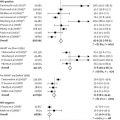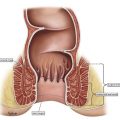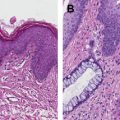Anal squamous cell cancer is most frequently a locoregional disease that is amenable to curative therapy in a majority of fit patients. Complete response rates after chemoradiotherapy (CRT) are good, with up to 75% of patients with no evidence of relapse on surveillance. Relapse is most frequently locoregional and is often amendable to salvage surgery with curative intent. Effective surveillance attempts to improve outcomes by identifying recurrent or persistent disease early, managing both acute and late toxicities, and offering reassurance to patients. This article explores the rationale and evidence for surveillance programs after definitive CRT.
Key points
- •
Patients with radically treated anal canal squamous cell cancer (SCC) require surveillance/follow-up to allow salvage surgery to take place with the aim of cure in patients with persistent or locally recurrent disease.
- •
Clinical evaluation is critical with documentation of abnormalities that persist; continuity of care may assist in this process.
- •
Acute toxicities can be severe and must be managed after treatment to prevent escalation.
- •
Late toxicities relating to prior tumor-related damage and radiotherapy-related long-term side effects should be managed actively with specialist referral as appropriate.
Introduction
Patients with anal SCC treated with radical intent using CRT generally have an excellent prognosis. The US Radiotherapy Oncology Group 9811 trial (completed in 2005) indicates a 5-year overall survival rate of 75%. There are more than 8000 new cases of anal cancer diagnosed per year in the United States. With a majority of these patients treated with radical intent and an expected follow-up time of 5 years with low attrition, this may equate to greater than 25,000 patients who remain on active surveillance at any one point and an even larger number alive and in remission beyond 5 years.
Surveillance is a routine part of the management of most patients treated radically for cancer but it remains important to understand the rationale and basis for this practice in each cancer subtype.
Broadly, surveillance should aim to deliver:
- •
Timely interventions that have an impact on an individual’s chances of cure or life prolongation.
- •
Improved quality of life, through:
- ○
Effective management of toxicities to prevent escalation
- ○
Psychological reassurance
- ○
When specifically looking at anal cancer, these factors can be mapped into the areas indicated in Box 1 .
- •
Detection and monitoring of persistent disease after completion of radical CRT
- •
Detection of locoregional recurrent disease after radical CRT
- •
Management of acute/late toxicities
- •
Psychological reassurance
Although acknowledging that surveillance can offer significant psychological reassurance, this can result in marked anxieties around the time of the follow-up appointment or scan with a significant impact on an individual’s quality of life.
This article explores these phenomena, the evidence, where available, and a rational approach where not.
Introduction
Patients with anal SCC treated with radical intent using CRT generally have an excellent prognosis. The US Radiotherapy Oncology Group 9811 trial (completed in 2005) indicates a 5-year overall survival rate of 75%. There are more than 8000 new cases of anal cancer diagnosed per year in the United States. With a majority of these patients treated with radical intent and an expected follow-up time of 5 years with low attrition, this may equate to greater than 25,000 patients who remain on active surveillance at any one point and an even larger number alive and in remission beyond 5 years.
Surveillance is a routine part of the management of most patients treated radically for cancer but it remains important to understand the rationale and basis for this practice in each cancer subtype.
Broadly, surveillance should aim to deliver:
- •
Timely interventions that have an impact on an individual’s chances of cure or life prolongation.
- •
Improved quality of life, through:
- ○
Effective management of toxicities to prevent escalation
- ○
Psychological reassurance
- ○
When specifically looking at anal cancer, these factors can be mapped into the areas indicated in Box 1 .
- •
Detection and monitoring of persistent disease after completion of radical CRT
- •
Detection of locoregional recurrent disease after radical CRT
- •
Management of acute/late toxicities
- •
Psychological reassurance
Although acknowledging that surveillance can offer significant psychological reassurance, this can result in marked anxieties around the time of the follow-up appointment or scan with a significant impact on an individual’s quality of life.
This article explores these phenomena, the evidence, where available, and a rational approach where not.
Clinical guidelines
International and national clinical guidelines are regularly updated and offer clinicians a benchmark by which to formulate their practice. Surveillance has infrequently been explored, however, in a rigorous fashion and thus levels of evidence are based on retrospective review and expert opinion.
The European Society for Medical Oncology (ESMO) and National Comprehensive Cancer Network (NCCN) guidelines are probably the most frequently referred to internationally for many cancers, including anal cancer. Both sets of guidelines are similarly aligned but it is acknowledged that there is limited evidence on which to base their recommendations.
There are notable differences between these guidelines, as indicated in Table 1 .







